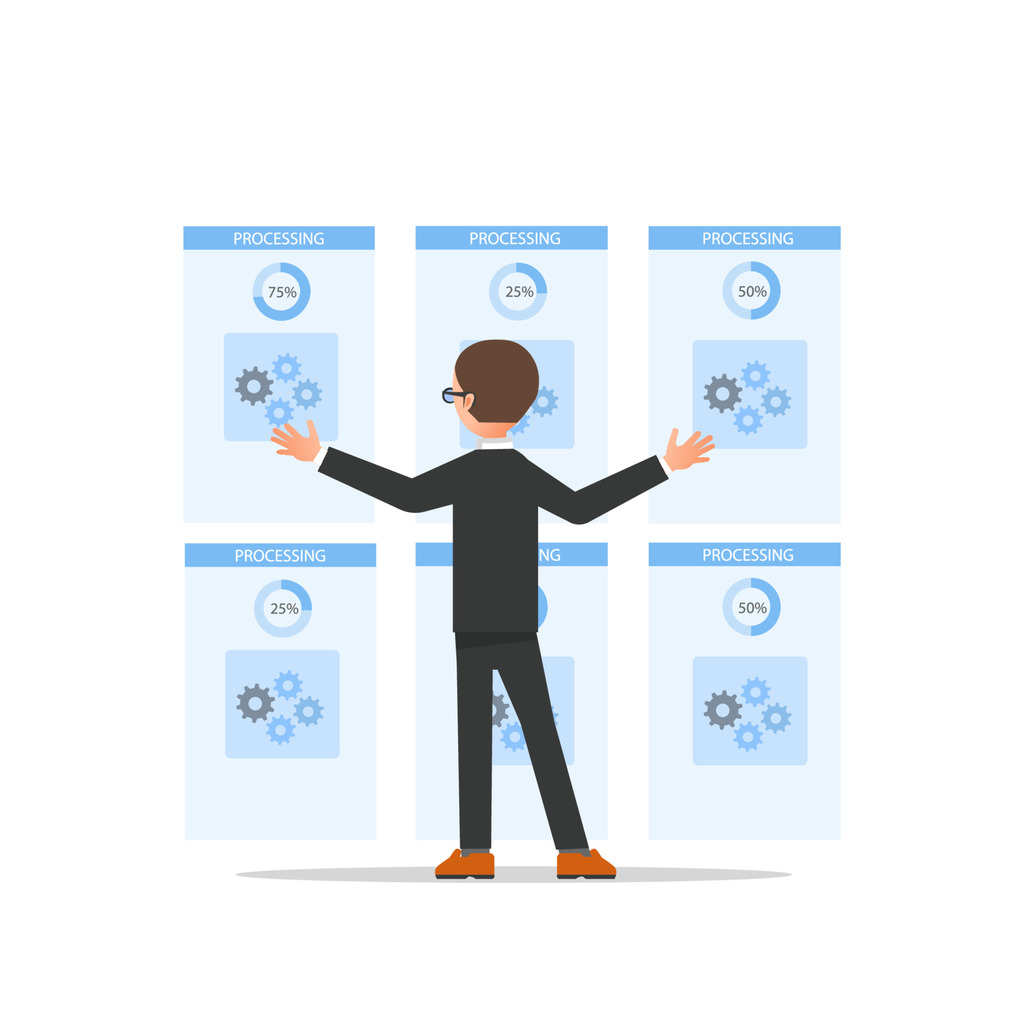How to Implement Automated Actions for Business Efficiency

Manual workflows drain time and resources in fast-paced markets. Leaders now prioritize solutions that eliminate repetitive tasks while boosting accuracy. Systems that convert routine work into optimized processes deliver measurable gains in productivity and scalability.
Modern tools allow teams to configure workflows without coding expertise. These platforms connect seamlessly with existing software, breaking down data barriers between departments. Early adopters report 25–40% faster task completion within months of deployment.
Strategic implementation creates ripple effects across organizations. Teams redirect energy toward innovation instead of administrative chores. Customers benefit from quicker response times, while companies reduce costs tied to human error.
This guide details practical steps for integrating intelligent systems across sales, HR, and operations. Readers will learn to identify high-impact opportunities, select adaptable technologies, and measure ROI effectively.
Key Takeaways
- Manual processes limit growth by consuming critical time and resources
- Workflow optimization drives measurable gains in speed and accuracy
- Non-technical users can now design and manage complex systems
- Cross-platform integration prevents data silos and communication delays
- Early adopters achieve ROI through cost savings and productivity spikes
- Customer satisfaction improves with faster service delivery
Understanding Business Efficiency Through Automation

Outdated operational methods create bottlenecks that stall growth. Businesses achieve peak efficiency when replacing manual steps with intelligent systems that work faster and more accurately. This shift frees teams to focus on high-value work while maintaining consistent output quality.
Automation drives measurable improvements across critical areas:
| Metric | Manual Processes | Automated Processes |
|---|---|---|
| Task Completion Time | 4-6 hours | 15-30 minutes |
| Error Rate | 8-12% | 0.5-2% |
| Scalability | Linear (requires hiring) | Exponential (system-based) |
These improvements create a multiplier effect. Streamlining one department often reveals opportunities in adjacent teams. For example, CRM automation strategies simultaneously boost sales follow-ups and customer retention efforts.
Modern solutions also enhance compliance through built-in audit trails. Real-time dashboards let managers spot trends faster than manual reporting allows. This agility helps companies adapt to market shifts while maintaining operational control.
Leaders who implement these tools see returns beyond cost savings. Employees report higher job satisfaction when freed from repetitive tasks. Customers notice faster response times and more personalized service – key drivers of long-term loyalty.
What Are Automated Actions?
Effective process management hinges on systems that initiate precise responses to predefined events. These intelligent triggers eliminate manual work by executing tasks when specific criteria match business rules. For example, updating customer records in Salesforce or sending inventory alerts in Odoo can occur seamlessly without human input.
These systems monitor three key elements:
- Data changes (new entries, deletions, updates)
- User interactions like form submissions
- Time-based schedules or deadlines
Whenconditions align, the technology activates workflows across departments. A sales team might automatically receive lead assignment notifications, while accounting gets payment reminders.
Platforms like Groove simplify complex logic through drag-and-drop interfaces. Users configure multistep sequences involving approvals, data transfers, or alerts. This flexibility supports cross-platform coordination – CRM updates can trigger marketing campaigns or service tickets.
Timed action sequences handle recurring tasks like monthly reports or compliance checks. Managers set parameters once, and the system maintains consistency regardless of staff availability. This reliability reduces errors by 83% compared to manual methods, according to recent workflow studies.
Benefits of Automated Actions for Business Optimization

Businesses gain measurable advantages when replacing manual operations with system-driven processes. These solutions reduce labor-intensive tasks while improving output quality. Leaders see returns through cost containment, faster operations, and strategic resource allocation.
| Business Impact | Manual Approach | System-Driven Results |
|---|---|---|
| Task Duration | Hours of human effort | Minutes via timed action sequences |
| Error Frequency | Common in data-heavy tasks | <2% with rule-based execution |
| Growth Capacity | Limited by team size | Unrestricted through trigger-based scaling |
Error-prone manual data entry becomes obsolete with predefined business rules. Systems standardize information handling across departments, ensuring compliance without constant oversight. One retail chain reduced invoicing mistakes by 91% using this method.
Response speeds accelerate dramatically. When conditions meet preset criteria, instant action sequences activate – like shipping confirmations sent within seconds of payment clearance. This reliability builds customer trust and repeat business.
Workforce satisfaction rises as teams transition from repetitive chores to creative problem-solving. A recent Gallup study found companies using intelligent workflows report 37% higher employee engagement scores. This shift also lets organizations reallocate budgets toward innovation instead of error correction.
Adopters consistently outperform competitors in market responsiveness. While rivals struggle with manual bottlenecks, optimized businesses adjust pricing, inventory, and campaigns in real time. This agility directly impacts revenue growth and customer retention rates.
Identifying the Right Processes for Automation

Companies achieve maximum impact by targeting specific workflows for optimization. High-volume tasks with predictable patterns – like data entry or report generation – deliver immediate returns when converted into system-driven action sequences. These processes require minimal creative input, making them ideal starting points.
Three key factors determine automation potential:
- Consistency: Repeatable steps following fixed rules
- Volume: High-frequency tasks draining resources
- Error costs: Manual mistakes affecting compliance or profits
Data transfers between platforms illustrate this perfectly. A retail business might automate inventory updates from POS systems to supply chain software. This eliminates manual reconciliation errors while saving 12+ hours weekly.
Time-sensitive operations also rank high. Customer service teams using trigger-based responses resolve tickets 40% faster. However, client-facing processes need careful design. Automated payment reminders work well, but complex complaints still require human nuance. Training customer service representatives to handle intricate issues can enhance overall efficiency and customer satisfaction. Additionally, implementing features such as ‘bulk ticket actions explained‘ can streamline the process for managing multiple inquiries at once, allowing teams to focus on more nuanced cases. Striking the right balance between automation and human interaction remains crucial for maintaining high service standards.
Leaders should prioritize tasks where delays cause bottlenecks. Manufacturing quality checks or invoice approvals often stall workflows. Converting these into rule-based action chains removes handoff delays between departments.
The best candidates combine clear criteria with measurable outcomes. One logistics company reduced shipping errors by 78% after automating label verification. Such strategic selections create compounding efficiency gains across organizations.
Step-by-Step Guide to Setting Up Automated Actions
Building responsive systems requires methodical implementation steps. This process transforms theoretical workflows into operational tools that drive efficiency. Follow these structured phases to activate intelligent processes within your organization.
Accessing the Flow Settings
Initiate setup by navigating to your platform’s flow management interface. Users create new workflows or modify existing ones through the New > Flow option in the top-right corner. The settings tab becomes visible after selecting a workflow, housing all essential controls for system behavior adjustments.
Centralized configuration panels let teams define trigger conditions and response sequences. These menus organize options logically, enabling even non-technical staff to establish rules for data changes or scheduled events. Always verify user permissions before making changes to prevent unintended disruptions.
Adding and Configuring Actions
Select the + Add an Action button within the designated section to begin crafting responses. Specify trigger types like time-based schedules or specific data field updates. Configuration involves three core elements:
- Event conditions determining when responses activate
- Target systems receiving executed commands
- Sequencing parameters for multi-step operations
Conduct test runs in sandbox environments before full deployment. This practice identifies conflicts between new configurations and existing processes. Document all changes thoroughly – clear records simplify troubleshooting and future optimizations.
Regularly review action chains as business needs evolve. Update field conditions and timing parameters to maintain alignment with operational goals. Properly maintained systems adapt to growth while sustaining performance benchmarks.
Configuring Triggers and Conditions for Automated Actions

Precision configuration forms the backbone of reliable workflow systems. Businesses achieve optimal results by aligning technical settings with operational needs. This process requires understanding how event detection and data parameters work together.
Selecting the Right Trigger
Triggers act as launch pads for system responses. Choose between event-based options like email replies or time-sensitive alerts such as overdue tasks. For example, “On Days Overdue” monitors deadlines, while “On Salesforce Update” tracks CRM changes.
Event-driven triggers respond instantly to customer interactions. Meeting bookings or conversation outcomes activate follow-up sequences. Time-based options maintain momentum on recurring tasks without manual oversight.
Defining Field Conditions
Field conditions add precision to trigger activation. Set criteria like numerical ranges or specific data states in connected platforms. A sales team might require:
- Opportunity value exceeding $10,000
- Lead status marked “Hot”
- Days since last contact ≤ 3
AND logic combines multiple checks, ensuring actions only fire when all rules align. The five-condition limit forces focus on critical business rules. This prevents system overload while maintaining responsiveness.
| Trigger Type | Common Use Case | Condition Limit |
|---|---|---|
| Email Engagement | Follow-ups after 3 opens | 2 field checks |
| CRM Updates | Pipeline stage changes | 5 data points |
| Time-Based | 30-day renewal reminders | 1 schedule + 3 fields |
Proper configuration reduces false activations by 68% according to workflow analytics. Teams maintain control through adjustable parameters that evolve with business needs. Test combinations in staging environments before full deployment to ensure expected behavior.
Integrating Automated Actions with Salesforce and External Applications
Modern businesses achieve operational excellence by connecting core systems. Salesforce integration bridges customer data with operational workflows, enabling real-time responses to critical changes. This alignment ensures sales teams and support departments operate from unified information.
Salesforce Synchronization Methods
Salesforce updates activate workflows through hourly data syncs. Supported fields include phone numbers, email addresses, and currency values – essential for most business scenarios. Teams should avoid date-dependent triggers since these fields don’t sync automatically.
| Supported Field Types | Unsupported Types |
|---|---|
| Phone, Email, Text | Date, Formula Fields |
| Currency, Percent | Encrypted Text |
| Picklists, References | Time-Based Metrics |
Design time-sensitive workflows with sync delays in mind. A lead status change might take 120 minutes to trigger inventory checks. Buffer periods prevent missed actions during data propagation.
External Platform Connection Strategies
APIs enable instant data exchange between Salesforce and external applications. Real-time triggers work best for payment gateways or shipping systems requiring immediate updates. Webhooks offer alternatives for platforms lacking native integrations.
Consider these factors when choosing connection methods:
- Response time requirements (instant vs. batched)
- Data volume thresholds
- Error recovery protocols
| Trigger Type | Best For | Latency |
|---|---|---|
| API Calls | Critical order updates | <2 seconds |
| Scheduled Syncs | Batch reporting | 1-4 hours |
Monitoring tools track integration health across connected systems. Teams receive alerts for failed data transfers or authentication errors. This vigilance maintains workflow reliability as organizations scale.
Utilizing Advanced Settings to Optimize Automated Actions

Sophisticated workflow systems require precise calibration to meet evolving business demands. Advanced configurations transform basic processes into intelligent engines that adapt to complex scenarios. These tools empower teams to refine operations beyond initial setup phases.
Applying Custom Rules and Filters
Custom rules enable granular control over workflow behavior. Organizations can set multi-layered conditions, like triggering inventory reorders only when stock dips below 15% and seasonal demand exceeds projections. This precision prevents unnecessary activations while maintaining critical responses.
Data filters ensure relevance across departments. Marketing teams might apply geographic restrictions to campaign launches, while HR automates onboarding tasks for specific job roles. These controls prevent system overload by focusing resources where impact matters most.
Performance optimization balances speed with accuracy. Systems can prioritize high-value transactions during peak hours, delaying less urgent tasks. One logistics company reduced server load by 34% using timed execution rules without affecting delivery schedules.
Exception protocols maintain stability during unexpected events. When payment gateways fail, workflows reroute transactions to backup processors instead of halting operations. This resilience keeps businesses operational during technical disruptions.
Scalability features future-proof investments. As data volumes grow, adjustable thresholds and parallel processing prevent bottlenecks. Teams maintain efficiency without constant manual adjustments – a key advantage for expanding enterprises.
Managing Multiple Actions and Trigger Conditions
Organizational efficiency thrives when multiple workflow rules operate without conflict. Clear hierarchies prevent overlapping instructions from causing errors or delays. Groove’s three-tier structure ensures critical business priorities always take precedence.
Priority Levels in Practice
Global rules maintain company-wide standards. These top-level settings override all others, ensuring compliance with essential policies. Financial approvals or data security protocols often use this tier.
Departmental teams control collection-level settings. Marketing campaigns or regional sales processes operate at this medium priority. These rules adapt global standards to team needs without compromising core requirements.
Individual workflows handle specialized tasks. Customer onboarding sequences or inventory alerts function here. While flexible, these settings can’t override higher-level configurations.
This layered approach balances control with adaptability. Teams maintain autonomy while adhering to organizational guardrails. Regular audits ensure all triggers and conditions align with evolving business goals.

